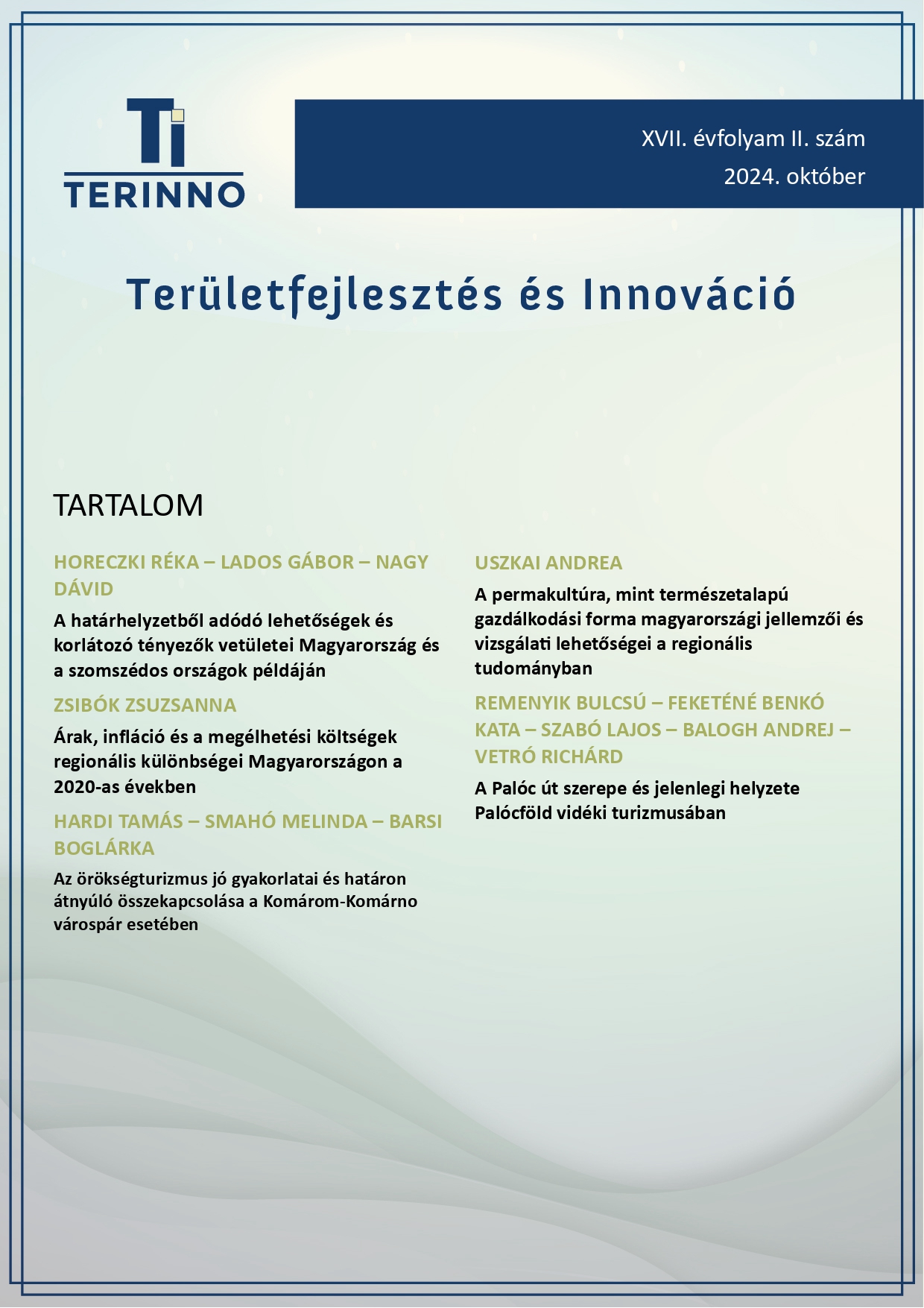Good practices and cross-border connections in heritage tourism: The case of the Komárom-Komárno city pair
DOI:
https://doi.org/10.15170/terinno.2024.17.02.03Keywords:
cross-border tourism destination, heritage tourism, Komárom-Komárno, regional development, EuropeanizationAbstract
Our study summarizes the practical findings from the SPOT Horizon 2020 research project as they pertain to the twin cities of Komárom–Komárno, with a focus on opportunities for developing heritage tourism. Cross-border tourism destinations in the European Union face significant development prospects due to the permeability of borders and the availability of development funds. Heritage tourism, in particular, is well-suited to realize the integrative vision of the two sides of a border, fostering joint development and leveraging the colourful and rich cultural heritage of border regions for tourism purposes. This work illustrates the development achievements of the Slovak-Hungarian twin cities through several best practices while identifying the challenges hindering their development into a unified destination. We conclude that transforming these cities into a cohesive destination could elevate their current national or regional appeal to a European level, provided that the attractions on both sides are integrated into a unified offering. To this end, the study provides policy recommendations.

